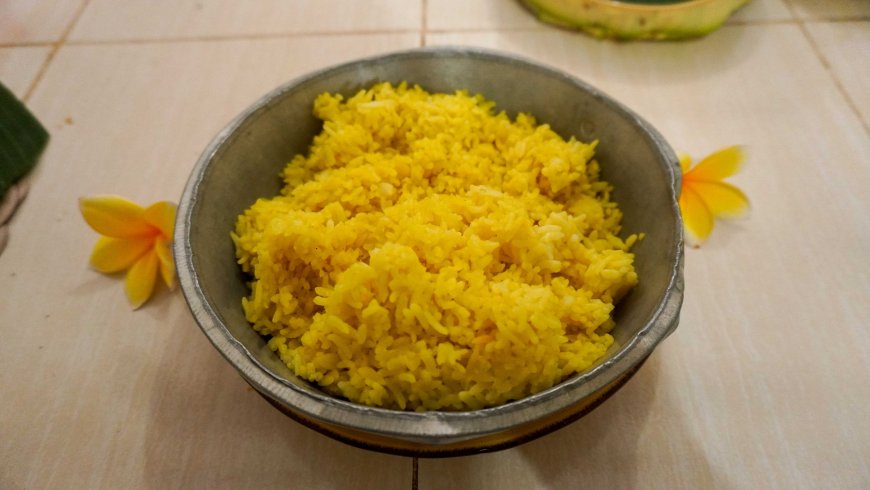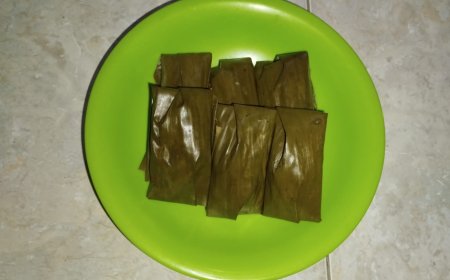Nasi Yasa: The Philosophy and How to Make Sacred Food in Yadnya Rituals
Nasi Yasa is a traditional Balinese dish usually served after performing a Yadnya, or sacred offering. Nasi Yasa symbolizes gratitude for those who have offered their services during a religious ceremony. The main component of Nasi Yasa is yellow rice, accompanied by a variety of side dishes.

Nasi Yasa or Nasi "Jasa" is one of the traditional dishes of the Balinese people, usually served to those who have participated in ngayah. In this context, ngayah means helping to work in a religious ceremony. Nasi Yasa is typically distributed after a major ceremony or after performing a prayer offering.
Nasi Yasa consists of two words: nasi and yasa. Nasi is the staple food of the Indonesian people, while yasa comes from Old Javanese, meaning jasa, which refers to commendable and noble activities or deeds. Thus, Nasi Yasa is given to those who have contributed to helping with a religious ceremony. The main component of Nasi Yasa is yellow rice, which carries a profound philosophical meaning.
In the Lontar Tutur Kanda Sangakulun, the concept of Dewata Nawa Sanga is discussed, referring to the nine cardinal directions, each associated with a specific color. The color yellow is positioned in the West with Mahadewa as its primary god. Based on this, yellow rice symbolizes glory, wisdom, and greatness. This is linked to Mahadewa, who embodies glory and wisdom.

Components and Ingredients for Making Nasi Yasa (Source: Private Collection)
To make Nasi Yasa, there are several main ingredients are required to ensure that the philosophy and distinctive characteristics of Nasi Yasa remain intact throughout the preparation process. The ingredients needed to make Nasi Yasa include:
- Tamas
- Yellow Rice
- Eggplant, Cucumber, and Kemangi.
- Egg
- Chicken
- Shrimp
- Anchovies or Be Gerang
- Peanuts, Serundeng, dan Sambal Uyah or Salt.
In addition to the ingredients mentioned above, supplementary side dishes can be added to make the final result of Nasi Yasa more appealing. The additional ingredients or side dishes that can be included are such as chicken satay, gerang or lindung, bitter melon, and others. However, the ingredients that should ideally be included in Nasi Yasa are those mentioned earlier.

Yellow Rice in the Preparation of Nasi Yasa (Source: Private Collection)
The process of making yellow rice for Nasi Yasa is quite similar to the general preparation of yellow rice. To make yellow rice for Nasi Yasa, the following steps can be followed. First, prepare the ingredients like rice, coconut milk, turmeric, bay leaves, and lemongrass. Next, steam the rice for 15-30 minutes over boiling water.
Prepare the coconut milk, turmeric, bay leaves, and lemongrass, then cook these ingredients until boiling, and don’t forget to add salt to taste. Once the rice is finished steaming, take it and mix it with the cooked coconut milk mixture. After the coconut milk is absorbed, steam the mixed rice again for 45 minutes. When steaming is complete, the yellow rice is ready to be used or served.

Final Result of Making Nasi Yasa (Source: Private Collection)
The final step in the preparation of Nasi Yasa is to arrange all the side dishes or ingredients that have been prepared into a platter. The yellow rice is placed appropriately into the platter, followed by the arrangement of side dishes on top, such as shredded chicken, boiled eggs, and anchovies. A garnish of Kamboja flowers is added as a symbol of the beauty of the Nasi Yasa that has been created. The use of side dishes in Nasi Yasa is intentionally prepared from various elements found in Bali, including ingredients from the land, sea, and rivers.
The offering of Nasi Yasa has long been recognized in the religious traditions of the traditional villages and communities on the island of Bali. This sacred offering in the form of Nasi Yasa is given to those who participate in ngayah or assist in religious activities, such as dewa yadnya, pitra yadnya, and other religious ceremonies.
Nasi Yasa is also closely associated with the Saraswati Day celebration in Bali. A day after Saraswati, the Balinese community routinely performs Banyu Pinaruh, or bathing with holy water from the sea or other springs. After the prayers, it is common to present offerings in the form of Nasi Yasa, filled with various side dishes.





























































